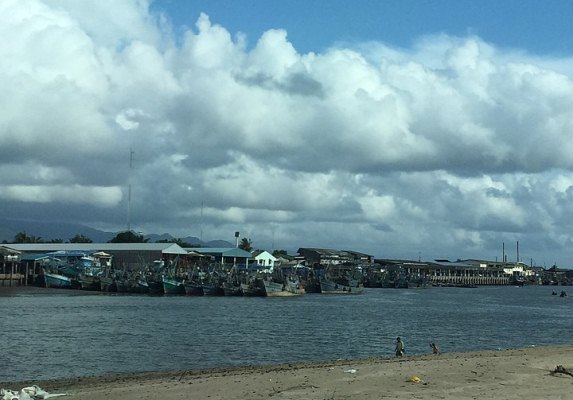-
The Thai government is surveying locations in Chumphon and Ranong in southern Thailand for a massive land bridge project connecting the Gulf of Thailand and the Andaman Sea
-
The location of the land bridge project will be decided by June
-
The future transport route could become a new option for cargo shipments between the Indian Ocean and Pacific Ocean
The Thai government is conducting surveys of possible locations in Chumphon and Ranong provinces in southern Thailand for a land bridge project connecting the Gulf of Thailand and the Andaman Sea, according to local media.
The location of the land bridge project—touted as a more convenient way to transport goods from the Middle East to the Pacific region—will be decided by June, said Transport Minister Saksayam Chidchob after chairing a meeting on March 15.
The proposed land bridge will reportedly be some 100 kilometers in length and provide a transport connection between ports on Thailand’s coast and the Andaman Sea and the Gulf of Thailand.
The Chumphon-Ranong land bridge project will serve as a link for the transport of oil from the Strait of Hormuz, more than 4,000 kilometers away from the Andaman Sea, to a port in Ranong before the oil is transported by land to a port in Chumphon, where it will be shipped to other countries in the region, including China, Japan and the Republic of Korea, Saksayam said.
The future transport route can become a new option for cargo shipments between the Indian Ocean and Pacific Ocean, and boost the economic development of southern Thailand including the Eastern Economic Corridor, he said.
The cargo exchange gateway will bring down transport costs by bypassing heavy traffic in the Malacca Strait, the transport minister said.
In 2016, about 19 million barrels of crude oil were transported through the Malacca Strait daily, 16 million barrels of which were transported to Pacific countries, particularly China, Japan and the Republic of Korea, he said.
About 24.7 million cargo containers are shipped through the Malacca Strait per year, accounting for 4.3% of the world’s overall cargo transport, Saksayam said, noting this is why Singapore’s port serves as Asia’s largest petroleum terminal that handles the second highest number of cargo containers in the world.
As such, southern Thailand has good potential to become an intercontinental shipment and cargo exchange gateway, given its proximity to Singapore, he said.
According to a recent research paper, the land bridge project will involve constructing a deep-sea port in Chumphon and upgrading the small port of Ranong into a modern deep-sea port.
The paper, published by ISEAS-Yusof Ishak Institute, added that the two ports will be connected by a dual-track railway and a motorway, which will constitute the land bridge for the multimodal transport of containers and goods from the South China Sea through the Gulf of Thailand to the Indian Ocean through the Andaman Sea.
One key advantage of the land bridge is that it will offer international shippers an alternative route, bypassing the congested Strait of Malacca and shortening shipping time by about one day.
Photo by =UT=





